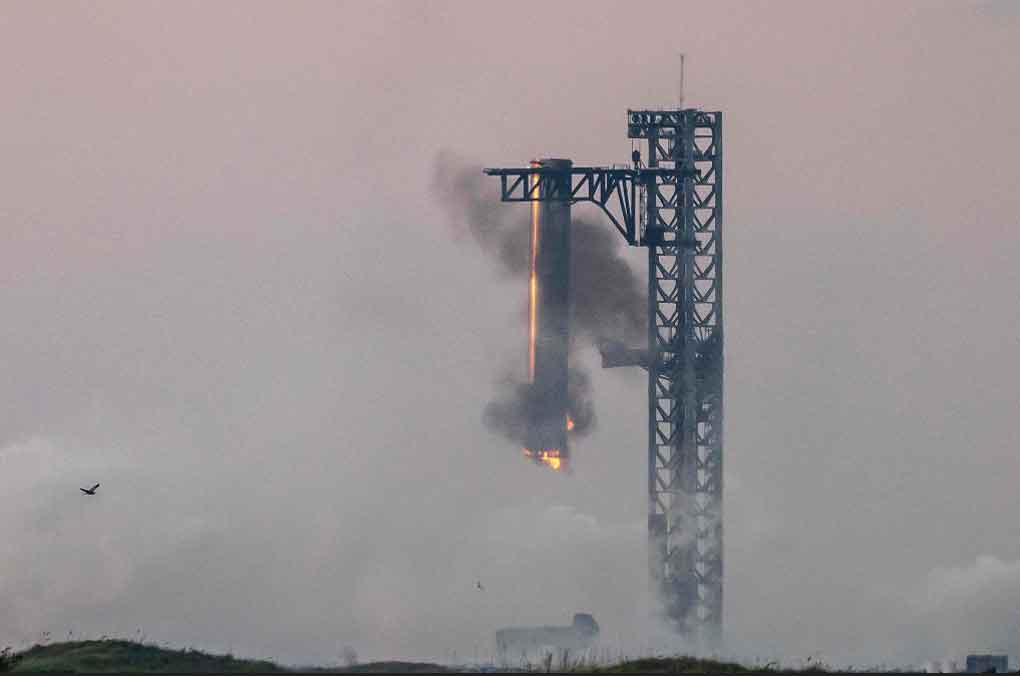Named “Mechazilla” by SpaceX founder Elon Musk, these arms achieved a key milestone in SpaceX’s push toward rapid rocket reuse, several media outlets noted.
“SpaceX successfully caught the Super Heavy rocket back on its launch pad in Boca Chica, Texas, for the first time, after separating from the Starship. An unprecedented event,” CNN in Spanish reported.
This Sunday, SpaceX successfully launched the latest test flight of Starship —its fifth since 2023— belonging to the most powerful rocket system ever built and which could one day be used to carry humans to the Moon and Mars. According to the aforementioned news channel, for the first time, this demonstration mission included an ambitious attempt to maneuver the 71-meter-tall booster rocket into a gigantic landing structure, after it consumed most of its fuel and broke away from the upper Starship craft.
“The Super Heavy was successfully caught mid-flight with a pair of massive metal pincers, which SpaceX calls “chopsticks,” the CNN report said.
The primary objectives of Sunday’s test, Starship’s fifth, were to attempt “the first return to the launch site and capture of the Super Heavy booster, and another reentry burn and landing of Starship, with the goal of a Starship splashdown in the Indian Ocean,” SpaceX said in a statement.
The company said its engineers spent years preparing and testing the booster capture attempt, and the teams checked that the criteria were met on both the vehicle and the tower before the attempt to return the Super Heavy rocket to the tower.
“If these conditions had not been met, the rocket would have been diverted for a splashdown in the Gulf of Mexico, as in previous tests,” SpaceX explained.
The tower, nicknamed “Mechazilla” by Elon Musk, CEO of SpaceX, has huge metal arms which can be used to stack and move boosters and spacecraft at the launch site before takeoff, and are essentially designed to catch vehicles in the air when they return to Earth.
In an interview with Musk last June, the tycoon said that “in the future, the toothpick arms will be able to simply turn around and return a rocket to the launch pad within minutes of its return, allowing the vehicle to take off again once refueled, perhaps as little as 30 minutes after landing.”
ef/ro/cdg










